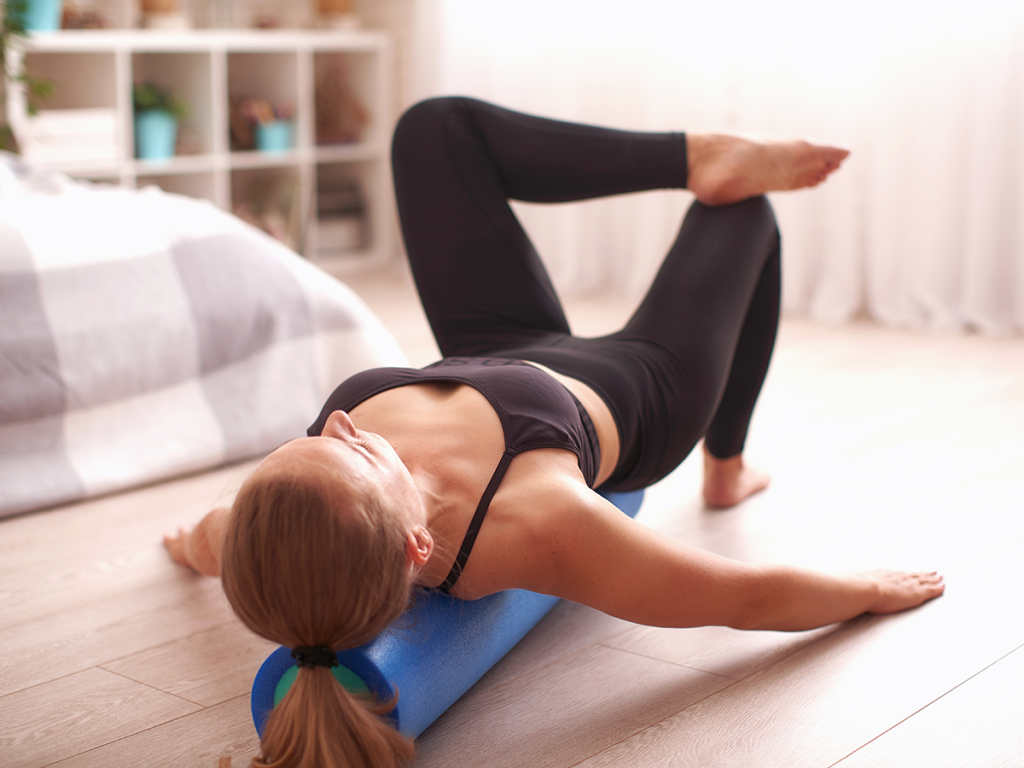
Cycling is a great form of exercise that offers numerous health benefits. It’s also a sport that requires a lot of physical endurance and strength. As a cyclist, regular foam rolling can help you improve your performance on the bike and prevent injury. Foam rolling is a form of self-massage that uses a foam roller to apply pressure to specific areas of the body. By doing so, you can break up adhesions and knots in the muscles and connective tissue, improve circulation, and increase range of motion. In this article, we’ll explore some foam rolling exercises for cyclists that can help you feel better on and off the bike.
Calves
The calf muscles are crucial for cycling as they help to control the movement of the foot and ankle. Tight calves can also contribute to knee pain and other issues. To foam roll your calves, sit on the floor with your legs extended in front of you. Place the foam roller under your calves and use your hands to lift your hips off the floor. Roll up and down the length of your calves, applying pressure to any tight or tender areas. Spend extra time on areas that feel particularly tight.
Quads
The quads are the muscles on the front of the thigh and are responsible for extending the knee and flexing the hip. These muscles can become tight from prolonged sitting or cycling. To foam roll your quads, lie face down on the floor with the foam roller under your thighs. Use your arms to lift your torso off the floor and roll up and down the length of your quads. Apply pressure to any tight or tender areas.
Hamstrings
The hamstrings are the muscles on the back of the thigh and are responsible for flexing the knee and extending the hip. Tight hamstrings can lead to lower back pain and other issues. To foam roll your hamstrings, sit on the floor with the foam roller under your thighs. Use your hands to lift your hips off the floor and roll up and down the length of your hamstrings. Focus on any areas that feel particularly tight or tender.
IT band
The IT band is a thick band of connective tissue that runs along the outside of the thigh. It can become tight and inflamed from cycling. To foam roll your IT band, lie on your side with the foam roller under your outer thigh. Use your arms to support your upper body and roll up and down the length of your IT band. Apply pressure to any tight or tender areas.
Glutes
The glutes are the muscles of the buttocks and are responsible for hip extension and external rotation. They can become tight and weak from prolonged sitting or cycling. To foam roll your glutes, sit on the foam roller with your knees bent and your feet flat on the floor. Cross your right ankle over your left knee and lean onto your right hip. Roll up and down the length of your right glute, focusing on any tight or tender areas. Repeat on the left side.
Lower back
The lower back is an important area for cyclists, as it helps to stabilize the pelvis and control the movement of the legs. To foam roll your lower back, lie on your back with the foam roller under your sacrum (the bony part at the base of your spine). Bend your knees and place your feet flat on the floor. Use your feet to push your hips up and roll up and down the length of your lower back. Focus on any areas that feel particularly tight or tender.
When to Foam Roll
Foam rolling can be done before or after a ride, or any time you’re feeling particularly tight or uncomfortable. Some people find that foam rolling before a ride helps to warm up their muscles and prevent injury. Others prefer to do it after a ride as a way to cool down and promote recovery. You can also foam roll on days when you’re not cycling, particularly if you’re experiencing ongoing tightness or discomfort.
Benefits of Foam Rolling for Cyclists
Foam rolling offers numerous benefits for cyclists, including:
Improved circulation: Foam rolling can help to increase blood flow and oxygen delivery to the muscles, promoting healing and recovery.
Reduced muscle soreness: By breaking up adhesions and knots in the muscles, foam rolling can help to reduce post-ride muscle soreness and stiffness.
Increased range of motion: Foam rolling can help to improve joint mobility and flexibility, allowing you to move more freely on the bike.
Injury prevention: By addressing tightness and imbalances in the muscles, foam rolling can help to prevent common cycling injuries such as knee pain and lower back pain.
Conclusion
Foam rolling is a simple and effective way for cyclists to improve their performance on the bike and prevent injury. By incorporating foam rolling into your regular routine, you can keep your muscles feeling loose and healthy. Remember to start with light pressure and gradually increase as needed, and focus on the specific areas that are causing you discomfort. With a little practice, you’ll be a foam rolling pro in no time!

